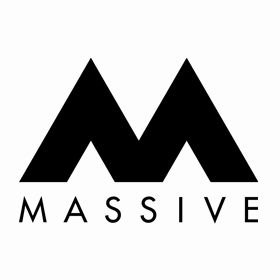
Benefits & Advantages of Productivity Tools
We’ve entered a new era of business: it’s remote, it’s hybrid, and it signals the rise of a modern enterprise.
The COVID-19 pandemic has left its mark on the world of business, and some of the changes appear to be for the long term. As such, businesses from startups to enterprises are scrambling to reposition to be competitive in the shifting market. A failure to adapt can prove catastrophic, as the story of Blockbusters’ inability to adapt to digital transformation shows.
So, it’s sink or swim for many businesses – but what does this shift in the market mean for enterprises?
Well, the core issue that many enterprises now need to address is how to manage a largely remote workforce. This encapsulates everything from how to drive productivity levels, measure performance, and stay on top of workflows.
You can consider this guide to be your all-in-one cheat sheet, outlining the best productivity tools the modern enterprise can use to thrive in these rapidly-changing times. Let’s go over some of the advantages of productivity tools.
Document sharing
Any company, large or small, uses documents on a daily basis. As such, it’s important to provide employees with a quick and easy way of viewing, editing, and sharing documents.
For some companies, the Microsoft suite does the job perfectly well, with Word, Excel, and PowerPoint all useful applications for various departments. Yet for others, a cloud-based solution such as Google Docs might be a better option.
With a cloud-based solution, document sharing becomes much easier, so teams can collaborate effectively and instantly. Plus, it’s the perfect remedy to the issue of distance. With cloud-based document sharing, a line manager can take a look at their employee’s work without the need for back-and-forth emails or document downloads.
File storage
Just as document sharing is important, you also need a comprehensive system for storing the large volume of files you undoubtedly have on the company books.
DropBox Business is one of the most popular solutions, as it allows for secure file storage of up to 3,000 GB. The software also lets users digitally sign documents, which can be a convenient way to save time.
Time tracking
When it comes to measuring employee productivity, few tools are better than time trackers. Time trackers, which include work tracking software, help you evaluate employee performance using the most valuable metric: time.
Rather than judge employees based on how many tasks or projects they’ve completed, time tackers give you a complete picture of how they spend their time during company hours. You can use this information to see how much idle time there is, and how you can reduce this. You can also use the time data to generate detailed reports to inform your payroll accurately.
With a wealth of time data at your disposal, performance appraisals become much more objective, and you put yourself in a great position to make changes if you notice concerning trends. This is just one of the many productivity tools benefits.
Project management
Project management software is more and more commonly used by modern enterprises. Why?
Because these tools allow you to optimize and automate your key workflows, delegate and track projects and encourage effective team collaboration. Plus, when you adopt project management software, you invite top talent.
These days, top talent has all the power, as they know that if a company doesn’t offer a flexible schedule, remote work, or modern software tools they can go elsewhere to find what they’re looking for.
As such, project management software can not only help you streamline your current processes and boost productivity but strengthen your hiring efforts. Plus, once you do make hires, onboarding will be effortless as it’ll simply be a case of introducing the new hires to the software and getting them up to speed.
Accounting
This is one for the HR or accounting department, and it’s an important tool. Accounting software simplifies the bookkeeping process, minimizing the risk of human error and making crunching the numbers a lot more straightforward.
Accounting software like FreshBooks allows users to easily record and track expenses, manage payments, and carry out many other finance-related tasks. Optimizing the accounting process can boost the efficiency of the accounting department, and potentially save your enterprise money in the long run.
Automation tools
Why spend a lot of time on trivial tasks these days when you can automate them?
That’s the premise behind tools like Zapier and Mailchimp, which aim to automate key processes in business.
Automation is the number one way to reduce time spent on tasks that don’t necessarily require human input at every step of the way. Let’s take emails for example. They’re absolutely important for many enterprises, but at the same time, manually sending out dozens of emails or more a day can be overly time-consuming and frankly a detraction from high-priority tasks.
Focus tools
While it might seem more suited to a person rather than a professional context, focus tools, that is to say, those which can help you concentrate can be very useful for the modern enterprise.
It isn’t uncommon for enterprises to strike deals with health-conscious app companies such as Calm, and offer it as a perk to employees. Encouraging positive habits and particularly those which can help focus can pave the way to improved productivity levels.
Another example would be a tool like Brain.fm, which plays music scientifically developed to help you focus on a particular task. It’s unconventional, yes, but this is what sets the modern enterprise apart from the stagnating one: it’s willing to adopt new measures to affect company-wide change.
Communication
Last but certainly not least is communication tools.
Software that encourages rapid communication and effective collaboration is becoming essential for many businesses. Tools like Slack, which allow for teams and employees to interact through context-specific ‘channels’, are hugely helpful for encouraging greater productivity levels.
Zoom is a big one, too, as it allows for large video conferences that can replace traditional meetings and briefings.
Final words
To succeed as a modern enterprise, there’s a need to adapt and be flexible. Adopting software tools to aid productivity is one of the best ways you can move with the times.
Alongside benefiting from your selected productivity tools’ features, your company will also easily attract top talent with top technology.























